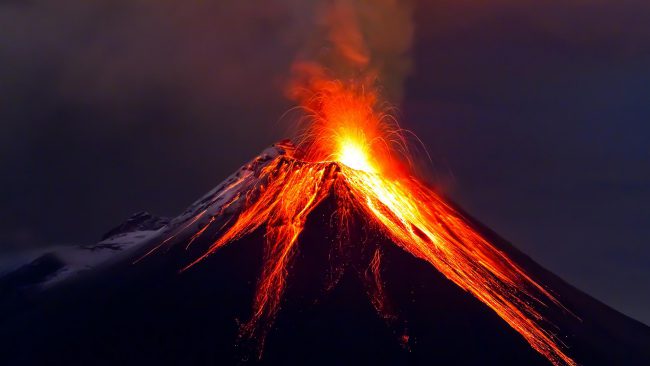New evidence: dawn of the dinosaurs has ensured volcanoes
 Perhaps the dinosaurs should thank the volcanoes for their domination of the planet. At least according to one theory. Most scientists believe that the onset of volcanic activity 200 million years ago led to mass extinction, which paved the way for the flourishing of the dinosaurs. And now scientists have found new evidence in favor of this theory: global geological "fingerprint", indicating that volcanic gases affect the whole world during extinction.
Perhaps the dinosaurs should thank the volcanoes for their domination of the planet. At least according to one theory. Most scientists believe that the onset of volcanic activity 200 million years ago led to mass extinction, which paved the way for the flourishing of the dinosaurs. And now scientists have found new evidence in favor of this theory: global geological "fingerprint", indicating that volcanic gases affect the whole world during extinction.
Geologists found that earth's crust holds large masses of volcanic rocks from the late Triassic period, which was 200 million years ago. From the fossil record we know that at about the same time a large part of the Earth's species became extinct, which allowed to flourish to the remaining dinosaurs (and other species). Because volcanoes can produce large amounts of carbon dioxide (CO2), perhaps the volcanic activity that has left massive lava flows also triggered global climate change that led to mass extinction.
What is missing is evidence that volcanic activity has indeed had such an impact on the whole world. By studying the geological record around the world, scientists have discovered that while the extinction in the atmosphere were emitted large amounts of mercury. Since mercury is also released by volcanoes, we can say that the eruptions were serious enough to affect the whole world and potentially cause a mass extinction.
Previous studies have shown that this volcanism could occur in pulses. But we didn't know how the time and frequency of these emissions is matched with the timing of the extinction and subsequent recovery of life. Therefore, scientists decided to look for a "fingerprint" of eruptions in the same sediments that record the mass extinction.
Mercury marker
Modern volcanoes emit large quantities of gases from which most of the sulfur dioxide and CO2, but with them leaking metallic mercury. This mercury may remain in the atmosphere for between six months to two years and spread around the world until it settles somewhere at the bottom of rivers, lakes and seas.
These same precipitation indicate a correlation between climate changes and mass extinctions. Therefore, if a layer of sediment, which speaks about mass extinction, also has unusually high concentrations of mercury, we can conclude that volcanic activity probably coincided with this extinction (and may have caused it).